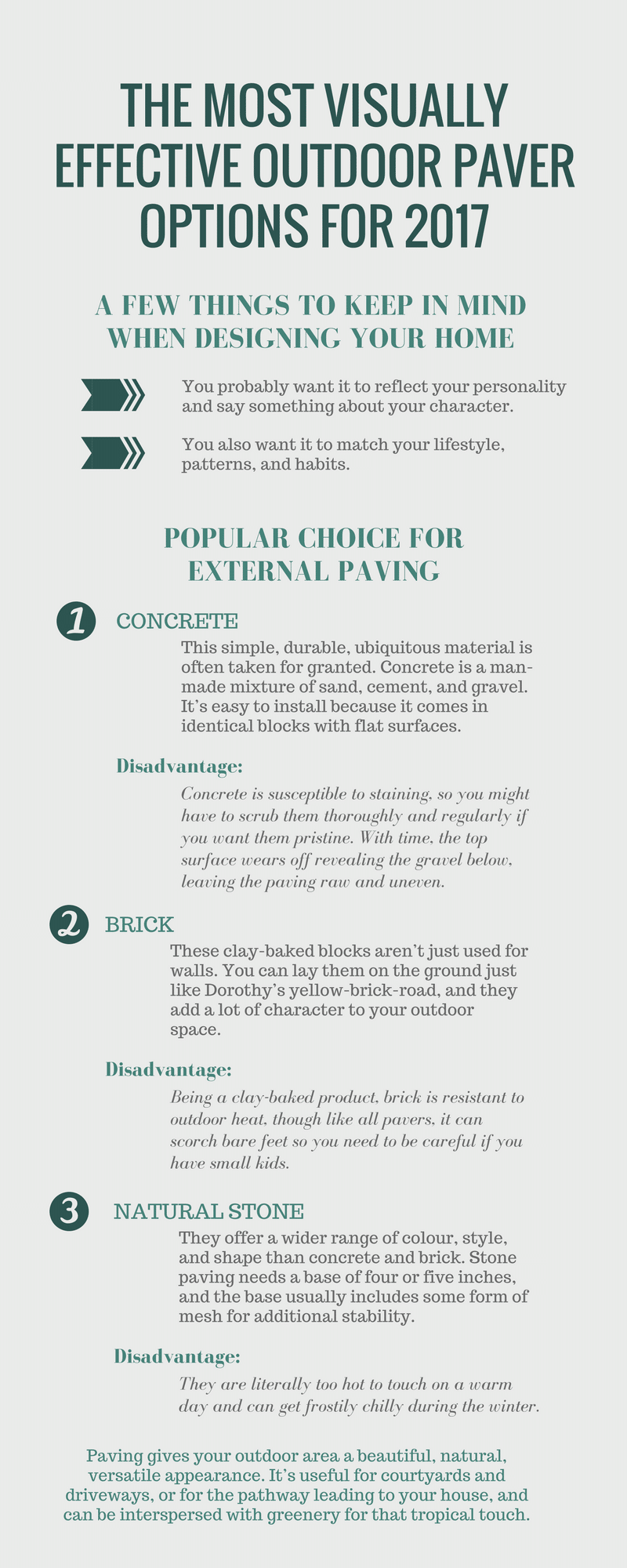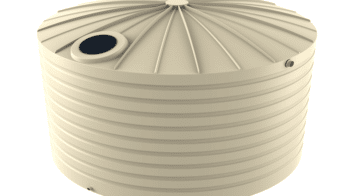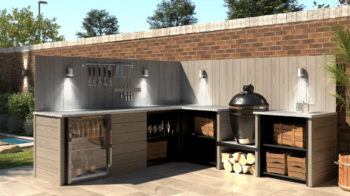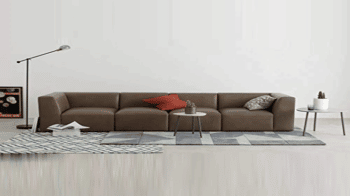
When you’re designing the home that you live in, there are a lot of things to keep in mind. You probably want it to reflect your personality and say something about your character. You also want it to match your lifestyle, patterns, and habits. For example, an elderly couple might prefer a single-level home because stairs affect their arthritis. A family with young children or pets will probably want some outdoor play space, or maybe a pool or splash bath.
Interior decorators, by description, often focus on the inside of your home. It seems like a more popular area of interest, and reality shows seem to agree. But if reality TV is the benchmark, then the outdoors are starting to get some attention too. There is an increasing amount of programming dedicated to backyards, landscaping, and outdoor greenery.

When you think about it, the outside of your home is even more important than the inside. It’s the first thing people see when they visit you, and it creates a firm impression. Even neighbours, passers-by, and random strangers can judge you based on the appearance of your yard. One way to give it a little oomph is to use attractive paving options.
The most popular choice for external paving is concrete. You may not have given concrete much thought. This simple, durable, ubiquitous material is often taken for granted. Concrete is a man-made mixture of sand, cement, and gravel. It’s easy to install because it comes in identical blocks with flat surfaces.
Concrete paving is easily interlocked because it is specifically designed to produce a tight fit. It’s great for all weather, because it doesn’t absorb water like stone does, and it doesn’t get slippery like marble or cement does.
If you’d like your concrete pavers to be more absorbent, you can use a special variant of ‘thirsty concrete’ which starts off absorbing 4,000 litres of liquid in the first minute. Subsequently, it will hold around 600 litres a minute for every square metre of concrete used. Thirsty concrete makes good pavings for regions with high volumes of rainfall.
As your most cost-effective paving choice, concrete offers versatility and ease. You can interlock concrete pavers in geometric patterns or lay them in a loose, irregular fashion. Concrete is susceptible to staining, so you might have to scrub them thoroughly and regularly if you want them pristine. With time, the top surface wears off revealing the gravel below, leaving the paving raw and uneven.
Another paving option you could look into is brick. These clay-baked blocks aren’t just used for walls. You can lay them on the ground just like Dorothy’s yellow-brick-road, and they add a lot of character to your outdoor space. They are beautiful to look at and easy to clean since they don’t need the labour-intensive scrubbing that concrete requires. You can actually combine brick and concrete pavers to create eye-catching patterns in your yard or driveway.
Floor brick pavers are durable because they don’t crumble in the way that wall bricks sometimes do. They also retain their colour and don’t fade or stain in the way that concrete often does. The layer beneath brick pavers is made from crushed rock, and brick doesn’t interlock like concrete because it’s shape is less versatile.
Being a clay-baked product, brick is resistant to outdoor heat, though like all pavers, it can scorch bare feet so you need to be careful if you have small kids. It’s great for pet reptiles though. If your family includes chameleons or iguanas, they will love a good brick bask.
One more popular paving product is natural stone. No, not marble or granite, those work better in kitchens and bathrooms. The kind of stones preferred for outdoor paving include: travertine pavers, flagstone, and veneer. They make attractive pathways, though they are literally too hot to touch on a warm day and can get frostily chilly during the winter.
They offer a wider range of colour, style, and shape than concrete and brick. Stone paving needs a base of four or five inches, and the base usually includes some form of mesh for additional stability. Whichever material you use for your paving, you can choose to ‘float’ them on loose sand and gravel, or set them on solid concrete.
Paving gives your outdoor area a beautiful, natural, versatile appearance. It’s useful for courtyards and driveways, or for the pathway leading to your house, and can be interspersed with greenery for that tropical touch. Remember to add regular weeding to your list of chores though, because weeds grow quite easily in the spaces between your paving, and can quickly crumble the paving and turn your beautiful yard into an unsightly bush.





